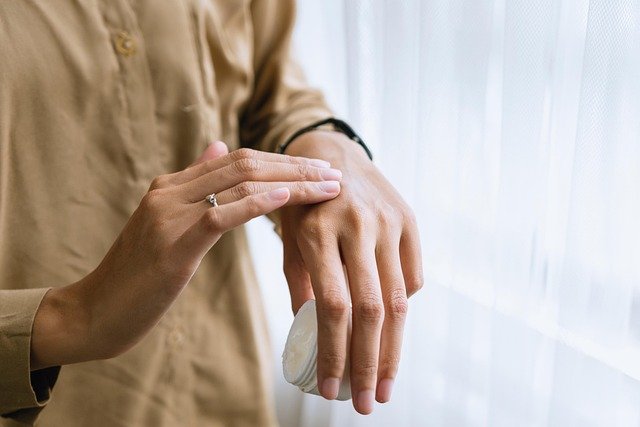Unraveling the Mystery of Eye Bags: Causes and Solutions
Eye bags are a common cosmetic concern that affect people of all ages and backgrounds. These puffy, swollen areas beneath the eyes can make us look tired, older, and less vibrant than we feel. While they're often associated with lack of sleep, the truth behind eye bags is far more complex. Factors such as genetics, aging, lifestyle choices, and underlying health conditions all play a role in their development. Understanding the root causes of eye bags is crucial for effectively addressing this issue and maintaining a youthful, refreshed appearance.

Genetic Predisposition
While lifestyle factors certainly play a role, genetics are a significant determinant in the development of eye bags. Some individuals are simply more prone to developing them due to their inherited facial structure and skin characteristics. Those with naturally thinner skin around the eyes or a genetic predisposition to fluid retention may find themselves more susceptible to eye bags. This genetic component explains why some people struggle with eye bags from a young age, while others may not experience them until much later in life.
The Impact of Aging
As we grow older, several age-related changes contribute to the formation of eye bags. The natural loss of collagen and elastin in the skin leads to decreased elasticity and firmness. This process, combined with the gradual weakening of the muscles and tissues supporting the eye area, results in a more pronounced appearance of eye bags. Additionally, the body’s ability to efficiently drain fluid and toxins from the under-eye area diminishes with age, potentially exacerbating puffiness and swelling.
Lifestyle Factors and Their Influence
While we can’t change our genes or stop the aging process, many lifestyle factors that contribute to eye bags are within our control. Lack of sleep is perhaps the most well-known culprit, as it can lead to fluid retention and blood vessel dilation in the under-eye area. However, other factors such as excessive alcohol consumption, high salt intake, and smoking can also play a significant role. These habits can lead to dehydration, fluid retention, and compromised skin health, all of which contribute to the appearance of eye bags.
The Role of Diet and Hydration
What we eat and drink has a profound impact on our skin’s appearance, including the development of eye bags. A diet high in salt can lead to water retention, causing puffiness around the eyes. Conversely, dehydration can also contribute to eye bags by causing the body to retain water as a protective measure. Maintaining a balanced diet rich in antioxidants, vitamins, and minerals can help support skin health and reduce the appearance of eye bags. Foods high in vitamin K, such as leafy greens, and those rich in vitamin C, like citrus fruits, can be particularly beneficial for strengthening blood vessels and improving skin elasticity.
Medical Conditions and Eye Bags
In some cases, persistent eye bags may be a sign of an underlying medical condition. Thyroid problems, particularly hypothyroidism, can cause fluid retention and puffiness around the eyes. Allergies are another common culprit, as they can lead to inflammation and swelling in the eye area. Chronic sinus issues may also contribute to the appearance of eye bags by causing congestion and fluid buildup. It’s important to consult with a healthcare professional if eye bags are accompanied by other symptoms or seem to be worsening over time.
Effective Treatments and Prevention Strategies
Addressing eye bags often requires a multi-faceted approach. For temporary relief, cold compresses can help reduce swelling and constrict blood vessels. Elevating the head during sleep can also help prevent fluid accumulation. Topical treatments containing caffeine, vitamin K, or retinol may help improve the appearance of eye bags by tightening the skin and improving circulation. For more severe cases, dermatological treatments such as chemical peels, laser therapy, or dermal fillers can provide more dramatic results.
The Rise of Non-Invasive Procedures
In recent years, there has been a surge in non-invasive treatments targeting eye bags. Radiofrequency and ultrasound technologies have shown promise in tightening the skin and reducing fat deposits without surgery. These treatments work by stimulating collagen production and promoting tissue remodeling. While they may not provide the same level of results as surgical options, they offer a lower-risk alternative with minimal downtime, making them increasingly popular among those seeking to address eye bags without going under the knife.
Surgical Solutions for Severe Cases
For individuals with severe or persistent eye bags, blepharoplasty remains the gold standard treatment. This surgical procedure involves removing or repositioning excess fat and tightening the skin around the eyes. While it’s a more invasive option, blepharoplasty can provide dramatic and long-lasting results. However, it’s crucial to carefully consider the risks and benefits and consult with a board-certified plastic surgeon before opting for surgery.
The Psychological Impact of Eye Bags
Beyond their physical appearance, eye bags can have a significant psychological impact on individuals. They can affect self-esteem, social interactions, and even professional opportunities. Many people report feeling older, less attractive, or constantly tired due to their eye bags. This psychological burden underscores the importance of addressing eye bags not just as a cosmetic concern, but as an issue that can profoundly affect one’s quality of life and well-being.
Future Directions in Eye Bag Treatment
As our understanding of the underlying causes of eye bags continues to evolve, so too do the treatments available. Researchers are exploring new technologies and techniques to address eye bags more effectively and with fewer side effects. Advances in regenerative medicine, such as stem cell therapies and growth factor treatments, hold promise for more targeted and natural-looking results. Additionally, personalized approaches that take into account an individual’s genetic makeup and lifestyle factors may lead to more tailored and effective treatment plans in the future.
In conclusion, eye bags are a complex issue influenced by a variety of factors, from genetics and aging to lifestyle choices and medical conditions. While they can be a source of frustration and self-consciousness, understanding their causes is the first step in effectively addressing them. By combining lifestyle modifications, targeted treatments, and, when necessary, medical interventions, it’s possible to minimize the appearance of eye bags and maintain a more youthful, refreshed look. As research continues to advance, we can look forward to even more innovative and effective solutions for this common cosmetic concern.




